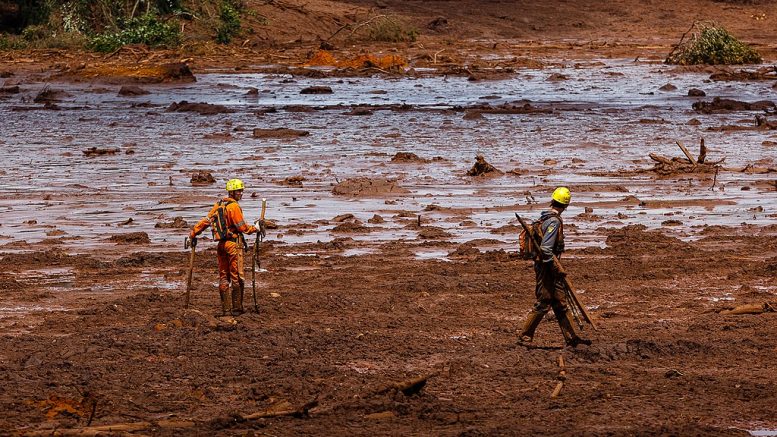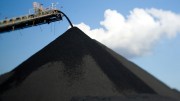Vale, one of the world’s biggest producers of iron ore and nickel, has been in the news a lot lately.
The Brazilian miner has been making strikes towards “green” credentials on the nickel side — making deals to supply low-carbon nickel to Sweden’s Northvolt and to EV market leader Tesla. On the iron ore side, it’s building a “green” pig iron plant in Brazil that will be the first to use its Tecnored technology, which reduces the carbon produced in the steelmaking process by replacing metallurgical coal with biomass. These are all positive actions for long-term profitability and sustainability. However, one piece of recent news — a U.S. Securities and Exchange Commission (SEC) lawsuit against Vale related to the Brumadinho tailings dam failure three years ago — is a reminder that the total consequences for the catastrophe are still being tallied.
In the claim filed on Apr. 28, the SEC alleges that Vale violated U.S. securities law by making false and misleading claims about the safety of its dams prior to the Jan. 25, 2019 collapse of the Fundao dam at its Córrego do Feijão iron ore mine in Brumadinho, Brazil. The accident killed 270 people and in the words of the SEC, “caused immeasurable environ-mental and social harm.” The SEC also notes that Vale lost $4 billion from its market cap in the days after the dam failure.

Three dirty firemen returning of a searching operation in Córrego do Feijão – place of Brumadinho city that was destroyed by mud after one of Vale’s dam breakdown.
In its claim, the SEC alleges that the company knew Brumadinho was at risk for failure and “deceived investors” about the safety and stability of its dams, all while “taking full advantage” of the U.S. capital markets.
In detail, the SEC complaint claims Vale “improperly obtained stability declarations for the dam by knowingly using unreliable laboratory data;” concealed material information from its dam safety auditors; disregarded accepted best practices and minimum safety standards; removed auditors who stood in the way of obtaining dam stability declarations; and made “false and misleading” statements to investors.
“Vale knowingly or recklessly suppressed the findings of its own retained experts. The Vale executives and employees who were responsible for monitoring the stability of Vale’s dams deceptively manipulated the processes that they supposedly safeguarded,” says the claim.
The statement further claims the company “knowingly or recklessly obtained eight fraudulent and deceptive stability declarations in connection with corrupted audits of the Brumadinho dam” between February 2016 and October 2018.
The 76-page document also notes that a previous failure of the Fundao tailings dam at Vale’s 50%-owned Samarco mining complex in Minas Gerais state, made dam safety a major concern for investors. That failure, on Nov. 5, 2015, caused 19 deaths, widespread environmental damage and displaced hundreds of people.
The SEC is demanding a jury trial for the Brumadinho case, which has been filed in U.S. District Court for the Eastern District of New York. The case has been assigned to Hon. Raymond Dearie, who will also hear a related shareholder class action suit against Vale.
For its part, the company has denied the allegations and said it would defend itself against them.
Vale has already spent $5.8 billion in the last three years on “reparation” for Brumadinho, including payments to 12,700 individuals, said CEO Eduardo Bartolomeo on the company’s first-quarter conference call. Last February, the company reached a US$7-billion agreement with Minas Gerais state for damages, although it could still be responsible for further environmental cleanup costs.
In addition, 19 people connected with the company face criminal charges in Brazil related to the environmental damage and fatalities.
Notably, when the SEC charges against Vale were announced, the stock price didn’t plunge. Instead, after briefly trending downward, the shares rose about 1.3% in São Paulo (partially buoyed by the company’s unveiling of its largest stock buyback program yet). Despite any reputational damage the company has suffered from Brumadinho — or from Samarco — Vale still runs a profitable business selling important commodities, including low-carbon Class 1 nickel from its operations in Canada.
Analyst John Tumazos of John Tumazos Very Independent Research noted that the SEC case is not likely to cause much financial damage to Vale, which has lately been generating EBITDA (earnings before interest, tax, depreciation and amortization) of US$2 to US$3 billion per month.
“The legal bill for Vale’s U.S. outside attorneys or the SEC fine may be seven or eight figures, but is not likely to be ‘material’ in relation to Vale’s size,” Tumazos told The Northern Miner in an email.
“Any time a company has a ‘catastrophe’ there is room to second guess, criticize, ask ‘why didn’t you see it coming,’ and why didn’t they better understand the remediation in the weeks after the catastrophe. Future companies that have big disasters will likely be targeted by shareholder suits, SEC charges or OSC or BCSC charges. It is part of the territory.”
The most interesting part of the SEC case for other miners may be that the claim was brought by the SEC Enforcement Task Force on Climate and ESG — a new team established in March 2021 within the Division of Enforcement. Its mandate is to “proactively identify ESG-related misconduct consistent with increased investor reliance on climate and ESG-related disclosure and investment.”
As part of its ESG push, the SEC is using sophisticated data analysis to mine and assess issuers’ information to identify potential violations, including material gaps or misstatements in issuers’ disclosure of climate risks.
While future lawsuits may not be as sensational as the SEC’s case against Vale, it’s worth noting that ESG disclosures — which are increasingly required by regulators — are coming under increasing scrutiny, opening up potential new avenues for lawsuits.





Be the first to comment on "Brumadinho won’t break Vale, but the piper still hasn’t been fully paid "